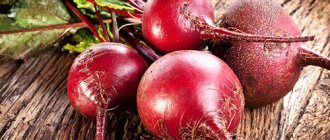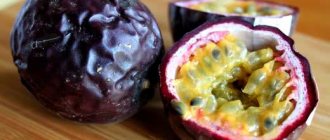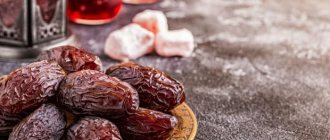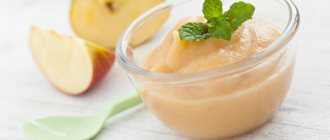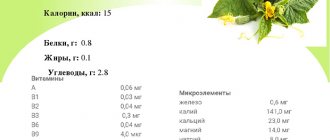Table of contents
- Why is stevia sweet, but not high in calories?
- Why count calories?
- Glycemic and insulin indexes
The plant lowers blood sugar levels, normalizes cholesterol levels, the functioning of the urinary tract, etc. It's amazing how many positive properties stevia has.
But let’s return to the current issue of the importance of sugar in nutrition. Experts recommend not to abuse this product, but even better to replace it completely with a healthier and lower calorie analogue. Sweet grass is one of them.
Beneficial properties and harm
The plant has a number of beneficial properties for the human body, in particular, it has bactericidal, anti-inflammatory and immunomodulatory effects. These properties allow the herb to be used for various diseases.
The use of stevia is advisable for the following indications:
- abnormalities of the endocrine system (in particular, obesity and diabetes);
- hypertonic disease;
- degenerative diseases (for example, osteochondrosis of the spinal column);
- metabolic disorders;
- chronic arterial disease;
- fungal infections;
- diseases of the gastrointestinal tract.
Important! The use of honey herb is useful as a prevention of hyper- and hypoglycemic conditions.
There have been many rumors and speculations about the dangers of stevia. In 2006, WHO stated that stevia extract is harmless to the human body (source - https://ru.wikipedia.org/wiki/Stevia). Numerous studies have confirmed that all components of the plant are non-toxic.
Is it possible to have stevia for diabetes?
Due to the high sweetness of glycosides, stevia is actively used in the manufacture of sweeteners for diabetics. It lowers blood sugar. Numerous studies have confirmed that consuming this herb leads to a reduction in insulin resistance.
Important! It is not recommended to abuse honey herb; its uncontrolled use can cause harm to the body.
Is it possible to take stevia while losing weight and playing sports?
Honey grass is often used for weight loss. Unlike many synthetic sweeteners, this natural product does not harm the body. At the same time, experts note that the plant reduces appetite and dulls the feeling of hunger. According to statistics, thanks to the use of stevia, you can lose up to 3 kg per month (without strict diets). If you combine honey grass and exercise, the number of kilos lost will be significantly greater. In general, the calorie content of the diet when replacing sugar is reduced to 12-16%.
Why is stevia sweet, but not high in calories, how many kcal are in 100 g
Despite its sweet taste, honey grass contains a very small amount of calories.
In terms of its chemical composition, this plant is simply a storehouse of useful substances:
- The sweetness of the plant is given by stevioside, rebaudioside A, C, B, dulcoside and rubuzoside - all these are sweet, but not high-calorie substances;
- Stevia is made useful by vitamins (A, B1, B2, C, P, PP, F, beta-carotene), as well as macro- and microelements (potassium, calcium, phosphorus, magnesium, silicon, zinc, copper, selenium, chromium).
The plant is not consumed in its pure form; it is processed and produced in the form of tablets, syrup, powder, etc., where the calorie content of stevia per 100 grams is indicated on the packaging - 18 kcal, and for 1 tablet (60 mg) it turns out 0.01 kcal.
Stevia as a sweetener
Stevia is not inferior in sweetness to regular sugar, but the calorie content of stevia is much lower than sugar, and it contains much more nutrients.
For comparison (how much stevia do you need to take so that the sweetness resembles 1 tsp of sugar):
| Sugar | Ground Stevia Leaf Powder | Stevioside | Liquid stevia extract |
| 1 teaspoon | 1/4 teaspoon | on the tip of a knife | 2-6 drops |
Why count calories?
KBZHU (calories, fats, proteins and carbohydrates) is the basis for everyone who monitors nutrition, loses weight and stays fit. The significance of this framework depends on the goals and reasons for tracking these parameters.
BZHU are responsible for the intake of vitamins, minerals, macro- and microelements into the body, the number of calories consumed is for strength and energy. Each person has their own daily requirement. If there is a deficiency, they lose weight; if there is a surplus, they gain weight or gain muscle mass (depending on food and physical activity).
To monitor your weight, you need to count the energy value (in the initial stages) and remember (at least approximately) the calorie content of foods. If we are not talking about losing weight or gaining muscle mass, but about the treatment and prevention of diseases, then the energy value of products is no longer so important.
For example, with diabetes, it is more important to control sugar levels, that is, monitor the amount of sugar that comes from food and how much sugar is contained in food. Sugar is present in sufficient quantities in products that belong to the category of proper and healthy nutrition.
Sweet, flour, pure sugar, etc. – this is already excess sugar, which can lead to an increase in its content in the blood. Therefore, experts recommend eliminating or replacing sugar with healthier products, one of which is stevia.
Application
The most popular extract is from stevia leaves, which is used as a sweetener instead of sucrose in the manufacture of food and beverages. These products are lower in calories. Stevia is added to chocolate, ice cream, yoghurts, pickled foods, bread, soft drinks, chewing gum, and candies.
Market Analytics
- COVID-19 is changing the rules of the game in the cosmetics market
- Beauty of the future: cosmetic innovations 2020
- New ingredients are the driving force of the cosmetics industry
Convenient search for beauty salons on our website
Beauty salons in Moscow Beauty salons in St. Petersburg Beauty salons in Ekaterinburg Beauty salons in Novosibirsk
Latest blog posts on our website
- Naturecream / Geranium (Pelargonium) oil for skin health and beauty
- Prostye-sovety / Save on a beauty salon: procedures that can be done at home
- Naturecream / Growth Factor - brings back youth?
- Oksana-Lezina / 3 effective abdominal exercises from a fitness instructor for beginners
- Prostye-sovety / Making perfect curls at home
- Prostye-sovety / Which hair removal method to choose
- Naturecream / Wrinkles Puppets
- Naturecream / PEPHA-TIGHT - instant skin lifting
- Naturecream / Blue light - a danger to the skin
- Naturecream / Cocoa Butter – A treat for the skin
Latest forum topics on our website
- Mrs._Smith / Badly sunburned! What to do?((
- Ice / Is it necessary to combine fitness classes with a diet?
- Antonova / What can be used for hair loss?
- Radio operatorKat / Who was on a protein diet?
- Suzanna / Mesotherapy on the face
Other articles in this section
| Carrots Although fresh carrots can be found in markets throughout the year, the vegetable is most beneficial when it is in season—summer and fall. The usual appearance is an orange root vegetable, but carrots are also found in white, yellow, red and even burgundy colors. Until the XV-XVI centuries. Only red varieties of carrots were cultivated; the orange variety appeared later. Due to the content of provitamin A, this vegetable is used to prevent eye diseases and improve vision. |
| Canned eggplant caviar After the famous film “Ivan Vasilyevich Changes His Profession,” the nickname “overseas” was assigned to eggplant caviar, although this dish is little known outside the former USSR. Georgia is said to be the probable homeland of eggplant caviar. Canned eggplant caviar is rich in vitamins and minerals, making it an excellent winter snack. |
| White radish White radish is a juicy, oblong-shaped root vegetable with a pronounced pungent taste. Belongs to the cruciferous family and is a relative of cabbage, radishes, and broccoli. Not only the root vegetable is eaten, but also radish tops, flowers and seeds. This vegetable crop has been known for its healing properties since ancient times. In Asian countries, varieties of white radish such as daikon and Chinese (Margelan) radish are common. |
| Chard Chard is a leafy green vegetable. The Mediterranean region is considered its homeland. Even the ancient Greeks and Romans wrote about the healing properties of chard. All parts of the plant are edible. |
| Chives Chives are a perennial herbaceous plant of the onion family with a strong odor. Grows in Europe, Asia and North America. The hollow leaf tubes differ from other types of onions in having a very small diameter. Other names for chives are chives or chives. |
| Black garlic Black garlic was first produced in South Korea, where it became very popular due to its nutritional properties. Unlike regular garlic, its black cousin contains almost twice as many antioxidants, is rich in natural sugars and amino acids, and does not contain the components that cause the usual pungent garlic smell. Garlic turns black through a special fermentation process, a method invented in the early 2000s. |
| Olives In Russia, black olives, the ripened fruits of the olive tree, are called olives. They are divided into two types: naturally ripened and artificially ripened. Natural olives usually contain pits. Artificially, black olives are obtained from unripe green olives through the process of oxygenation (oxidation). No dyes are used, violet-black is the natural color of ripe olives. When preserving, the stabilizer iron gluconate is added, which preserves the dark color of the olives. |
| Sweet yellow pepper The birthplace of bell peppers is actually Latin America. It belongs to the nightshade family and is distantly related to eggplants and tomatoes. Another name for this pepper is paprika, or sweet pepper. It came to Russia from Bulgaria, which is why it got its name. Bell peppers vary not only in color, but also in vitamin content. |
| Lima beans Lima beans belong to the legume family and are one of the oldest vegetable crops cultivated by humans. The homeland of beans is the fertile tropical plains of Central America, where the Mayans and Aztecs, and then the Incas, began to cultivate them. There are two varieties of lima beans. One grows as a bush and is distinguished by small seeds. The other is a climbing vine and requires staking. Climbing bean seeds are larger, approximately 4x2.5 cm. |
| Garlic (arrows) Green shoots of garlic are usually called arrows. They resemble green onions. As the garlic shoots grow, they twist, forming 2-3 loops. Then flowers appear at the end. If fresh heads of garlic can be found at any time of the year, then green arrows are considered an early summer delicacy. Later they acquire a harsh, “woody” taste. |
Glycemic and insulin indexes
These indicators are also important for people who are watching their weight or treating diabetes. The glycemic index shows how much and how quickly a product is able to increase blood sugar levels, which is automatically identified with the entry of glucose into the bloodstream and the release of insulin. The higher the GI, the greater the sugar spike and the more insulin there will be.
The insulin index shows how much insulin our body, namely the pancreas, produces in response to the intake of a particular product. That is, GI measures the amount of glucose, and AI measures the amount of insulin.
If these indicators are important to you, then in stevia the GI is zero, just like the AI. The general results can be summarized in the table:
| Index | Meaning |
| Kcal | 18 (per 100 grams) |
| Squirrels | 0 |
| Fats | 0 |
| Carbohydrates | 0,1 |
| GI | 0 |
| AI | 0 |
When purchasing stevia, read the ingredients and information on the package!
CALL +7 499 390 31 53 or
Uses of Stevia
Honey grass is used to prepare various herbal preparations. Stevia leaves are the basis for preparing infusions, decoctions, extracts and tea. Before use, they are dried and thoroughly ground in a coffee grinder to a powder. 1 tbsp. l. crushed leaves replace 100 grams of sugar.
Stevia syrup is easy to use. Instructions on how to prepare and store at home:
- Pour 200 ml of water into a saucepan, add cut shoots and leaves. Boil for 40 minutes, covered.
- Strain. Then evaporate over low heat until it becomes a syrup - when the liquid flows from the spoon in a thin thick stream, and the drop stops spreading and does not lose its shape.
- Pour the finished product into glass containers, seal tightly, and store for up to 1.5 years. During this time, stevia retains its beneficial properties.
The extract has a sweeter taste, its preparation:
- Place 10 g of ground dry stevia leaves in 100 ml of warm water.
- Insist for a day in the shade.
- Strain through cheesecloth.
Instead of water, you can use vodka. Pour into bottles and store for no more than a week. 8 drops replace 1 tsp. Sahara.
In cooking
To add stevia to food, it is used in the form:
- extract;
- ground leaves;
- stevioside;
- infusion.
Sweets with the addition of stevia have much lower calorie content than regular ones. Replacing sugar with honey grass extract is on an industrial scale. Chocolates and candies are produced with it, for example the ECO, Pobeda, TRAPA brands. Condensed whole milk is also available, but rarely.
Condensed milk
How to make your own condensed milk with stevia:
- Mix 3 tbsp. l. dry milk, 1 tbsp. l. corn starch, 2 tsp. stevia powder and 100 ml milk. Beat with a blender.
- Pour the mixture into the mold, add another 100 ml of milk. Cook in a steam bath for 9 minutes, stirring every 3 minutes.
Bakery
Stevia powder and extract can be used in baking instead of sugar. Recipes with stevia:
- Orange cupcake. Mix 2 eggs, 2 tsp. dry extract, 1 tsp. baking powder, 120 ml kefir, 200 g flour, 75 g melted butter, orange zest. Taste for sweetness and add more stevia if necessary. Place in molds and bake for 20–25 minutes at 180°C.
- Cherry pie. Combine 150 g of ground oatmeal, 2 eggs, 200 ml of yogurt, 20 g of cocoa, 2 g of stevioside. Pour half the dough into the mold, place 200 g of cherries on top, then the remaining dough. Bake for 20–30 minutes at 180°C.
In the video you can make cookies:
Jam
Jam can be made without sugar; it can be replaced with stevia. Recipes for diabetics:
- Wash, peel, cut 1 kg of apples, put in a saucepan. Add 1 tsp. stevioside diluted in 120 ml of water. Bring to a boil, cool. Boil again and pour into jars.
- Wash 1.2 kg of lingonberries and pour into a container. Add 1 tbsp. l. lemon juice, 2.5 tsp. stevioside, 150 ml of water and 50 g of apple pectin. Cook for 10 minutes, pour into jars.
View this post on Instagram
Publication from
